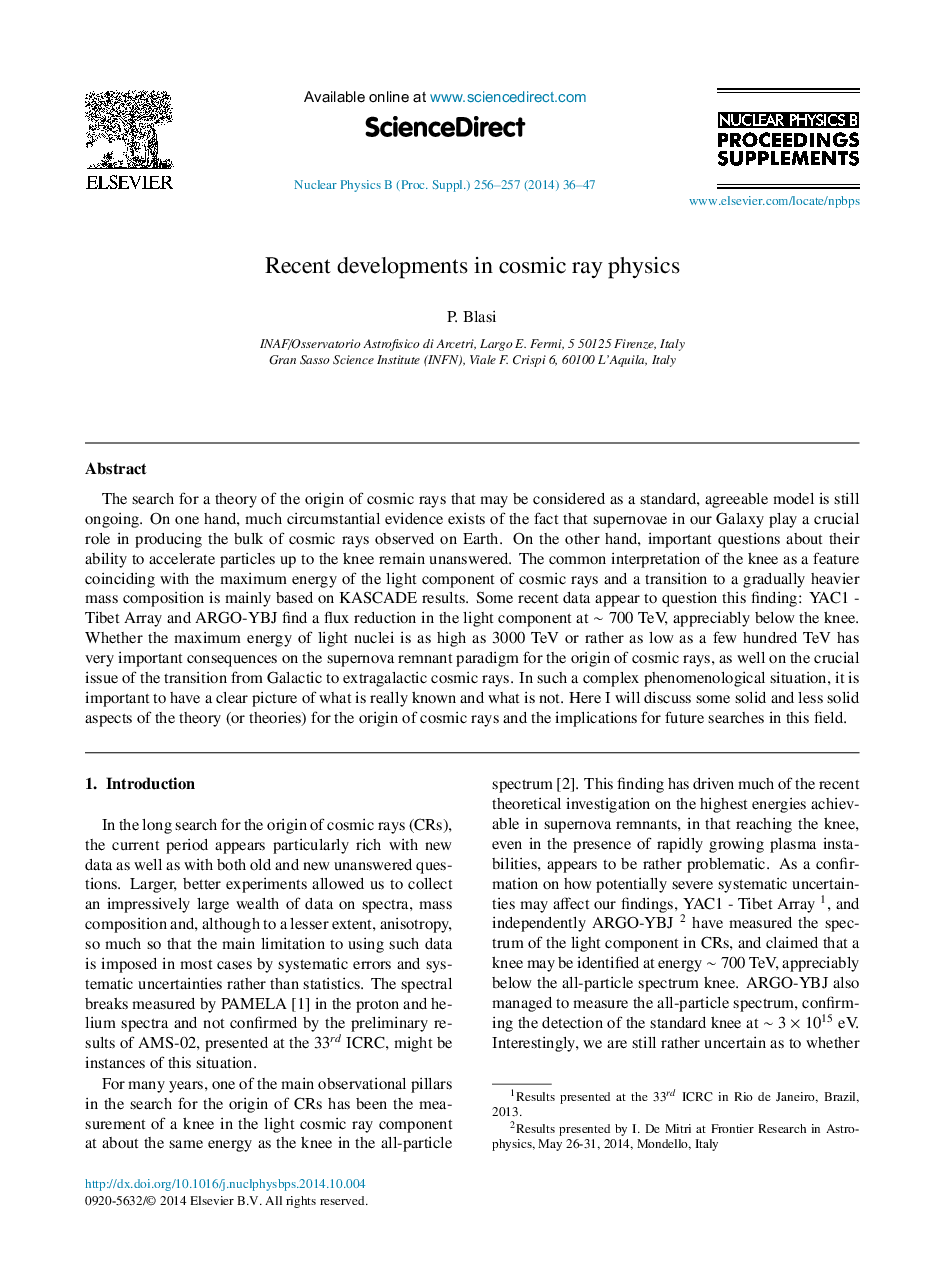| کد مقاله | کد نشریه | سال انتشار | مقاله انگلیسی | نسخه تمام متن |
|---|---|---|---|---|
| 1845607 | 1528078 | 2014 | 12 صفحه PDF | دانلود رایگان |
The search for a theory of the origin of cosmic rays that may be considered as a standard, agreeable model is still ongoing. On one hand, much circumstantial evidence exists of the fact that supernovae in our Galaxy play a crucial role in producing the bulk of cosmic rays observed on Earth. On the other hand, important questions about their ability to accelerate particles up to the knee remain unanswered. The common interpretation of the knee as a feature coinciding with the maximum energy of the light component of cosmic rays and a transition to a gradually heavier mass composition is mainly based on KASCADE results. Some recent data appear to question this finding: YAC1 – Tibet Array and ARGO-YBJ find a flux reduction in the light component at ∼ 700 TeV, appreciably below the knee. Whether the maximum energy of light nuclei is as high as 3000 TeV or rather as low as a few hundred TeV has very important consequences on the supernova remnant paradigm for the origin of cosmic rays, as well on the crucial issue of the transition from Galactic to extragalactic cosmic rays. In such a complex phenomenological situation, it is important to have a clear picture of what is really known and what is not. Here I will discuss some solid and less solid aspects of the theory (or theories) for the origin of cosmic rays and the implications for future searches in this field.
Journal: Nuclear Physics B - Proceedings Supplements - Volumes 256–257, November–December 2014, Pages 36-47
